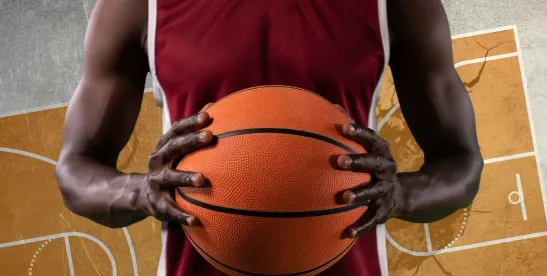Introduction
In the past three years, groundbreaking legal and structural changes have shaken collegiate sports. In June 2021, a unanimous Supreme Court held in NCAA v. Alston, 594 U.S. 69 (2021) that the NCAA and some member schools violated federal antitrust law by agreeing to limit education-related benefits—such as graduate school scholarships—for NCAA athletes.
In a now eminent concurrence, Justice Kavanaugh criticized the NCAA’s “massive money-raising enterprise [built] on the backs of student athletes who are not fairly compensated.” Id. at 112 (Kavanaugh, J., concurring). He added: “[I]t is highly questionable whether the NCAA and its member colleges can justify not paying student athletes a fair share of the revenues on the circular theory that the defining characteristic of college sports is that the colleges do not pay student athletes.” Id. at 110–11.
At the time, numerous states had recently passed legislation allowing college athletes to contract with private businesses to profit from their names, images, and likenesses (NIL). Two weeks after the Supreme Court’s Alston decision, the NCAA succumbed, changing its rule to permit college athletes to enter into NIL contracts.
While Alston did not address whether college athletes are employees, within months of that decision, both the General Counsel for the National Labor Relations Board (NLRB) and a federal district judge in Pennsylvania cited Justice Kavanaugh’s concurring opinion in support of the conclusion that college athletes can be employees of their university. Memorandum from the NLRB Office of the Gen. Counsel to all Regional Directors, Officers-in-Charge, and Resident Officers, No. GC 21-08, 2021 WL 4502333 (Sept. 29, 2021) [hereinafter GC Memo]; Johnson v. NCAA, 556 F. Supp. 3d 491, 501 (E.D. Pa. 2021).
Three years later, both the Third Circuit Court of Appeals and a Regional Director (RD) for the (NLRB) have held that collegiate athletes are, or may be, “employees” of the schools for which they play. Accordingly, collegiate athletes may be subject to the protections of the National Labor Relations Act (NLRA) and the Fair Labor Standards Act (FLSA), which would permit them to unionize and require that they earn at least a minimum wage for their athletic services.
Dartmouth Basketball Players are “Employees” and Can Unionize
In Trustees of Dartmouth College v. Service Employees International Union, Local 560, N.L.R.B. No. 01-RC-325633 (Feb. 5, 2024), an NLRB RD found that Dartmouth men’s basketball players were “employees” of Dartmouth and therefore could unionize. The RD explained that “[b]ecause Dartmouth has the right to control the work performed by the Dartmouth men’s basketball team, and the players perform that work in exchange for compensation,” the “basketball players are employees within the meaning of the [National Labor Relations] Act,” and accordingly have rights to unionize. See id. at 21.
Three findings animate the RD’s reasoning. First, the RD found that the athletes “perform work which benefits Dartmouth.” Id. at 18. Although the basketball program operated at a loss for the past several years, the RD found that Dartmouth benefits from the players’ athletic performances because the performances “generate[] alumni engagement—and financial donations—as well as publicity which leads to student interest and applications.” See id. In the RD’s view, the basketball players are distinguishable from other Dartmouth students engaged in extracurricular activities that may draw attention to the university because the Dartmouth Athletic Department has dedicated offices and personnel who market and “handle the revenues and publicity generated” by the athletes. See id. at 18–19.
Second, the RD determined that the Dartmouth basketball players are “employees” of the university because “Dartmouth exercises significant control over the basketball players’ work.” See id. at 19. The players are limited in their course selections, regularly miss class for team travel and practices, are “required to provide their basketball services to Dartmouth only,” are subject to strict practice and game schedules, and are required to ask permission to see family members on team trips. Id. While Dartmouth established that members of other extracurricular teams are subject to similar restrictions, the RD distinguished the basketball players on one issue, finding that “other members of the student body . . . are [not] so strictly supervised when they leave the confines of Dartmouth’s campus.” See id.
Third, the RD found that the basketball players are “employees” because the “men’s basketball team performs work in exchange for compensation.” See id. Although Dartmouth provides no athletic scholarships to its athletes and several members of the basketball team received zero financial aid to attend Dartmouth, the RD determined that the players received compensation because they were afforded an “early read” on their likely admissions decision, “receive[d] equipment and apparel,” and were given “tickets to games, lodging, meals, and the benefits of Dartmouth’s [sports-science] program.” Id. Because the basketball players “receive numerous fringe benefits,” the RD found them to be employees, even though “these payments and benefits may be less than the value of full scholarships.” See id. at 20.
The breadth of the RD’s decision raises numerous questions. Can Division III athletes unionize? What about members of the marching band? And can the RD’s reasoning be applied to non-athletic endeavors that nevertheless draw significant attention to their schools? What’s certain is that these issues remain in flux and undetermined. The five-member NLRB is certain to hear the Dartmouth case on appeal from the RD’s determination, and a federal court of appeals is also likely to hear the case after the NLRB.
NCAA Athletes May Be Due Wages for Participating in Athletics
In July 2024, the Third Circuit Court of Appeals held in Johnson v. NCAA, No. 22-1223, 2024 WL 3367646 (3d Cir. July 11, 2024), that a group of college athletes plausibly asserted that they are “employees” under the FLSA. If the athletes ultimately prevail, they would be subject to the protections of the FLSA, including minimum wage requirements.
Much like the Alston Court, the Third Circuit sharply criticized the NCAA’s attempt to prevent college athletes from labor protections merely by pointing to the “virtue of a ‘revered tradition of amateurism’ in” college athletics. Id. at *13 (quoting NCAA v. Board of Regents of the University of Oklahoma, 468 U.S. 85, 120 (1984)). The court noted the circular reasoning of denying labor rights simply because college athletes have a long history of receiving no labor rights. Referencing Justice Kavanaugh’s Alston concurrence, the Third Circuit explained: “‘that colleges may decline to pay student athletes because the defining feature of college sports . . . is that the student athletes are not paid’ is circular, unpersuasive, and increasingly untrue.” Id. at *12 (quoting Alston, 594 U.S. at 109 (Kavanaugh, J., concurring)). Indeed, the Third Circuit even refused to refer to the athletes as “student-athletes.” The court reasoned: “Like ‘band-aid’ or ‘laundromat,’ ‘student-athlete’ is essentially a brand name that has become synonymous with its product… [T]he term is an NCAA marketing invention designed to ‘conjure the nobility of amateurism,’ assert ‘the precedence of scholarship over athletic[s],’ and ‘obfuscate the nature of the legal relationship at the heart of a growing commercial enterprise.’” Id. at *4 (citations omitted). Notably, the NLRB’s General Counsel raised a similar argument in the September 2021 Memorandum. GC Memo at *4.
After traversing the long history of amateurism in college sports that was primarily designed for the NCAA’s benefit and citing the RD’s Dartmouth decision, Johnson, No. 22-1223 at *10 n.60, the Third Circuit ultimately held that college athletes may be employees, subject to FLSA protections, when four conditions are satisfied. See id. at *11. College athletes may be employees if, first, they “perform services for another party;” second, if the services are “necessarily and primarily for the other party’s benefit;” third, if the athletes are “under that [other] party’s control or right of control;” and fourth, the athletes perform the services “in return for ‘express’ or ‘implied’ compensation or ‘in-kind benefits.’” Id. The court concluded that “the touchstone remains whether the cumulative circumstances of the relationship between the athlete and college or NCAA reveal an economic reality that is that of an employee-employer.” Id.
The Third Circuit did not need to decide whether the athletes before the court satisfied its stated “employee” test but rather remanded the case back to the federal district court to determine the thorny issues. See id. at *13. But this much is clear: the NCAA’s storied history of amateurism provides zero shields for suits brought by athletes asserting labor rights. Indeed, tribunals appear frustrated by the history and receptive to change.
How far can this go? Are all Athletes Employees? Is all Play, Work?
In his Johnson concurrence, Third Circuit Court of Appeals Judge Porter cautioned that subjecting collegiate athletes to statutory labor protections could result in numerous “collateral effects.” See id. at *22 (Porter, J., concurring in judgment). Beyond the massive impact that the schools themselves would feel, Judge Porter warned that labor protections could affect the athletes’ “eligibility for federal student aid, state workers’ compensation regimes, student-athletes’ immigration status, and the employment status of students participating in other college-supervised extracurricular activities.” See id. He concluded that these “collateral effects” provide “reason to slow down and proceed warily.” Id.
Judge Porter further explained that “an obvious starting point is to ask whether a student-athlete may play her chosen sport because she wants to play, not to work primarily for her university’s benefit.” Id. at *16. He noted that “[p]lay is arguably a basic human good that many pursue for its own sake. It is not work, even though it may involve sustained, regulated, physical, or intellectual exertion and combine with other goals such as competition, teamwork, fitness, or personal glory.” Id. If it were otherwise, and all play that required exertion were work, all extracurricular activities may be “work” and thereby receive labor protections.
So Judge Porter clarified that “[i]f a student-athlete participating in an NCAA-sponsored sport . . . is engaged in play rather than work, then . . . the FLSA simply does not apply.” Id. (emphasis in original). But where is the line drawn between play, on one side, and work, on the other? Judge Porter opined that the “question probably shakes out differently for FBS football players and March Madness-level men’s basketball players than it does for other student-athletes.” Id. at *22. Importantly, this concurrence provides some hope that tribunals will decline to extend union and minimum-wage protections to all students who participate in athletics, or even any extracurricular organization, for that matter.
But for now, it is possible that countless college athletes may be “employees” of their school and thus subject to the labor protections of the NLRA and the FLSA—protections that include the right to unionize and receive a minimum wage. In all, the present and future of college athletics remain turbulent. NCAA colleges and universities, or any school with extracurricular offerings, should be aware of the legal developments that affect the financial structure of not just their athletic departments—but the entire financial structure of the schools.
William S. Fallon contributed to this article



 />i
/>i

